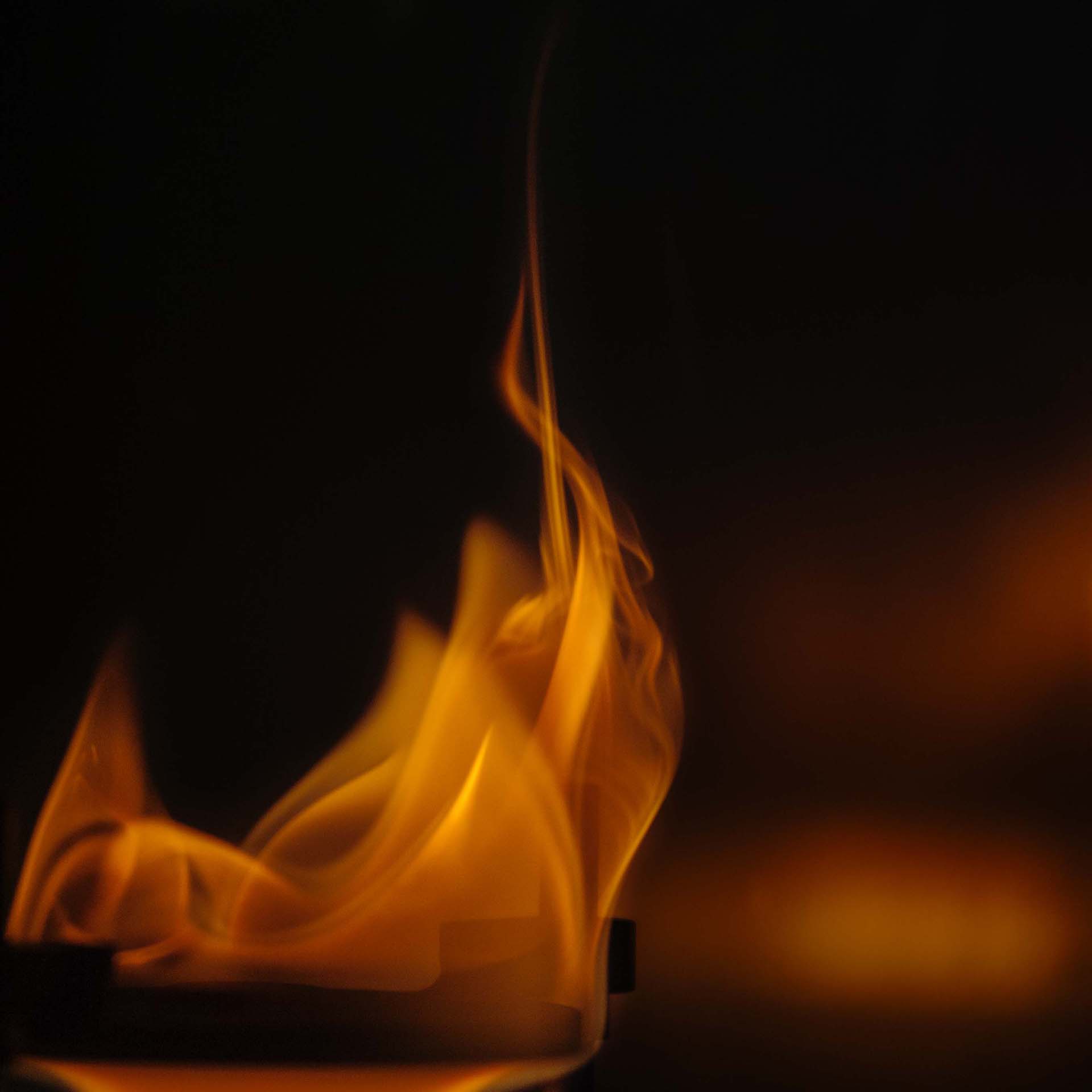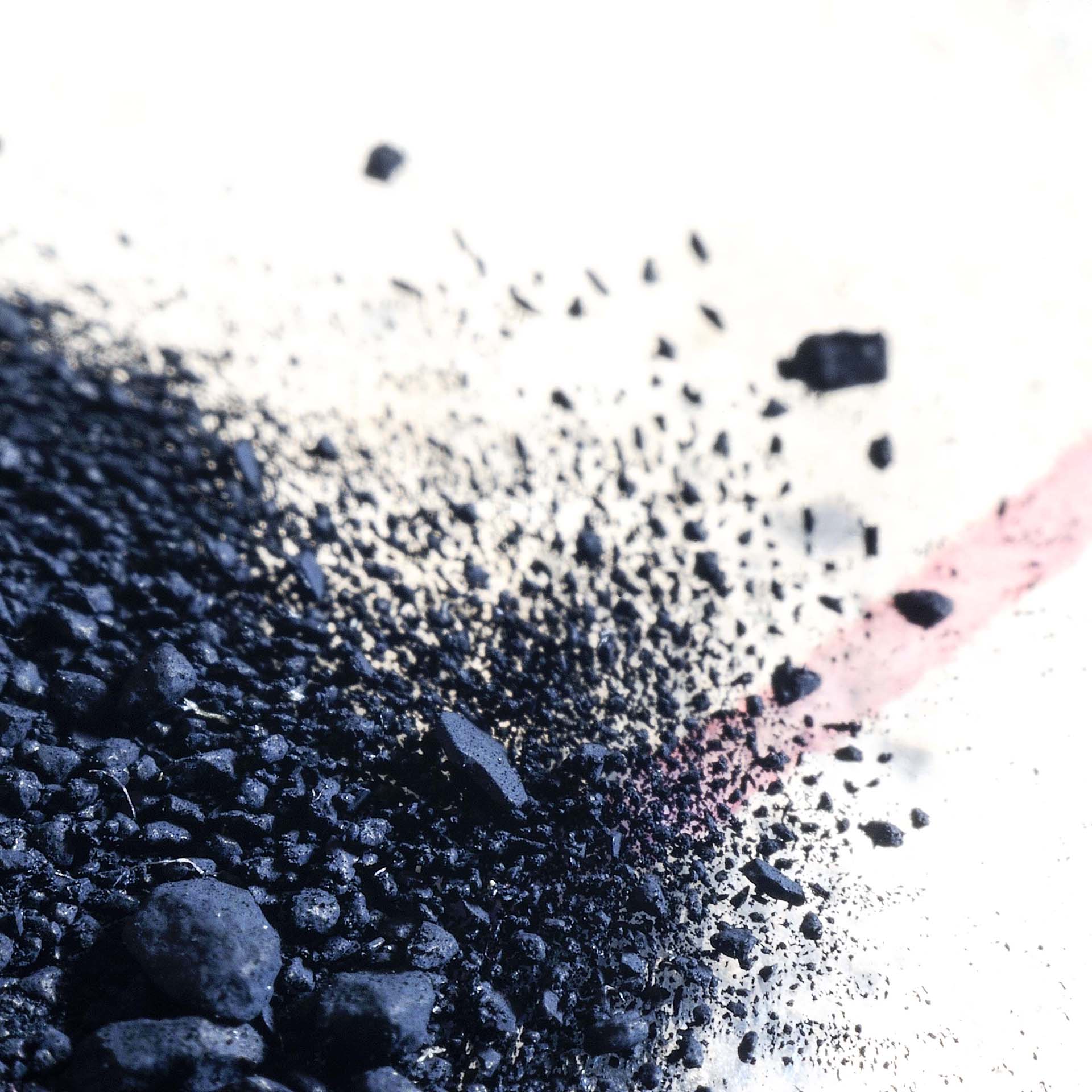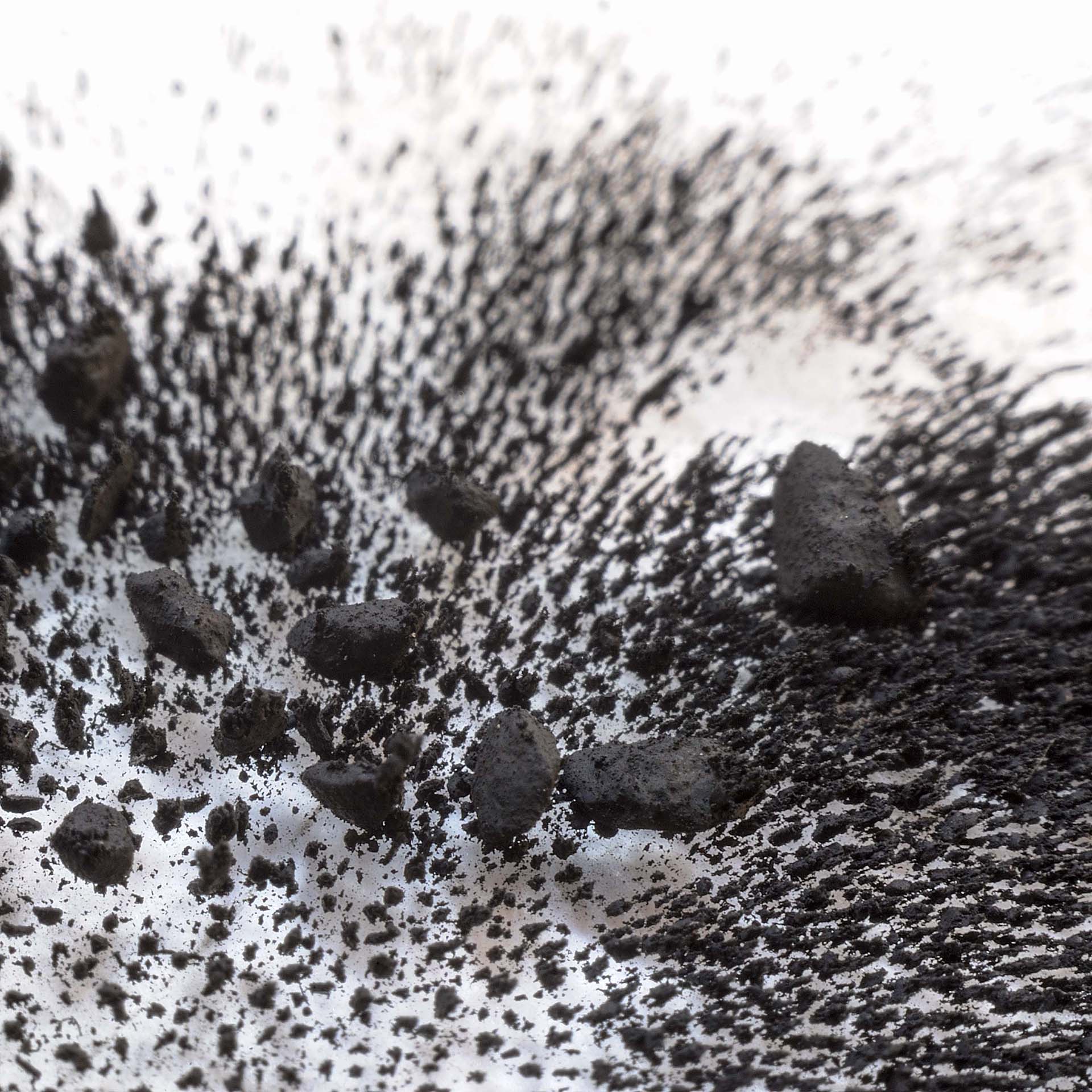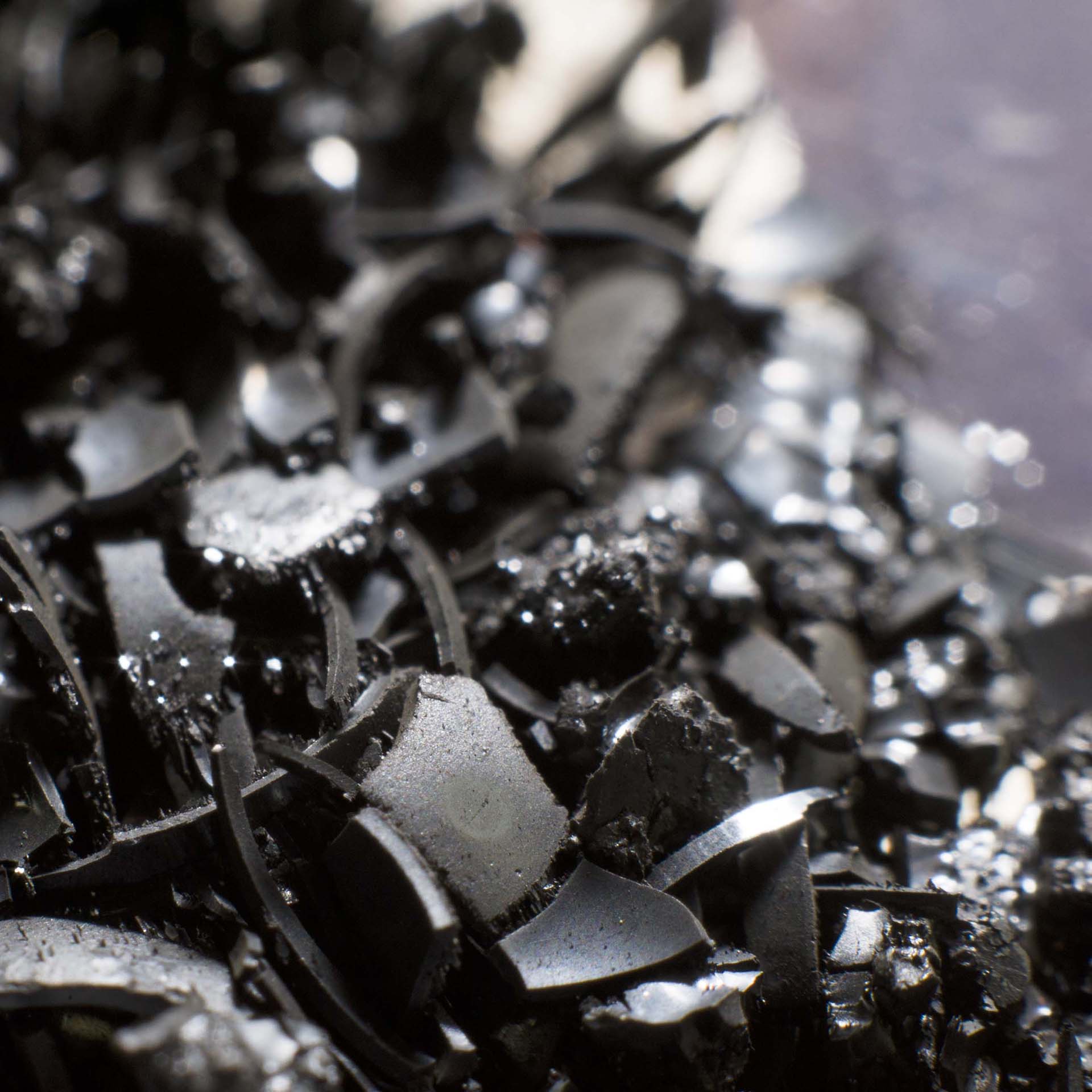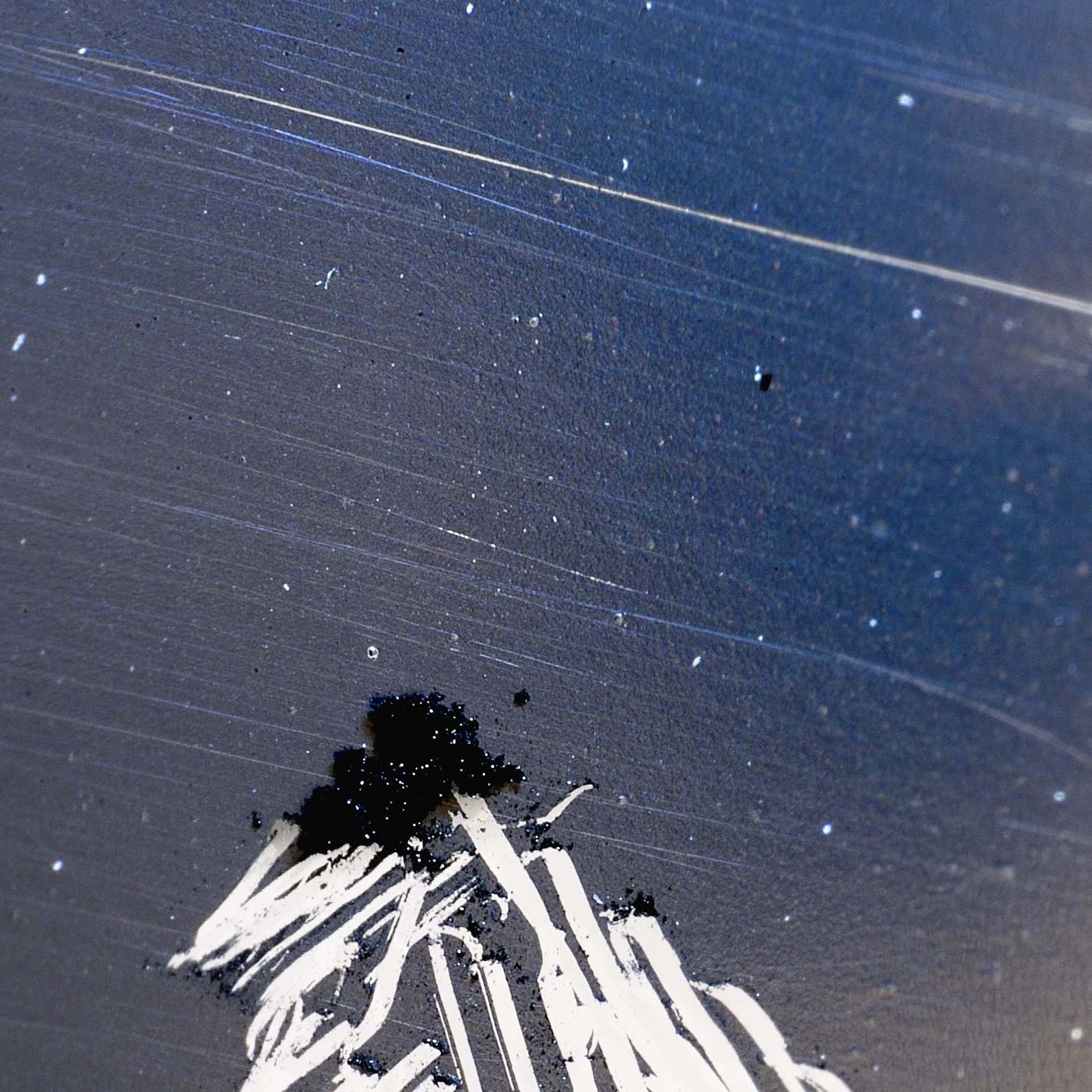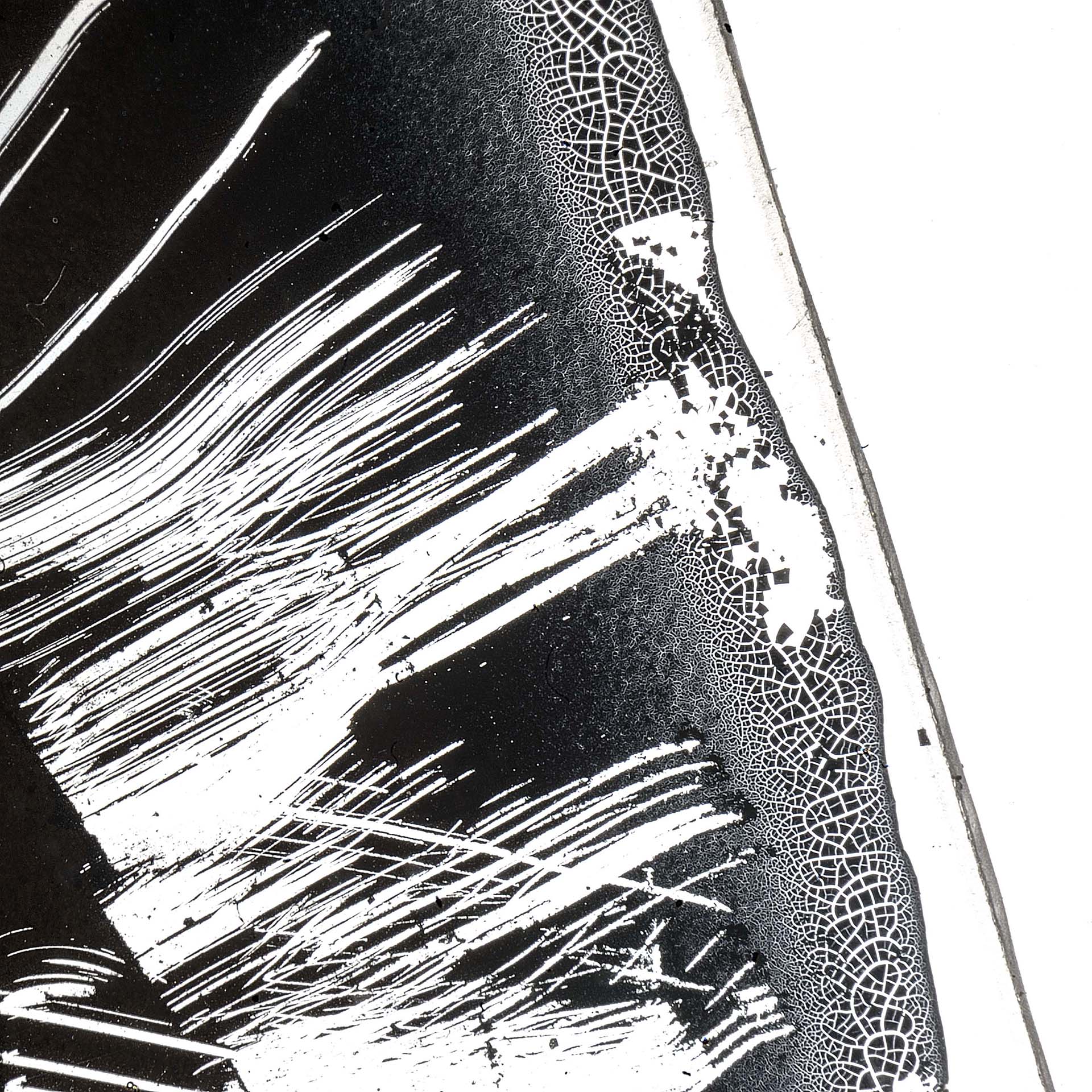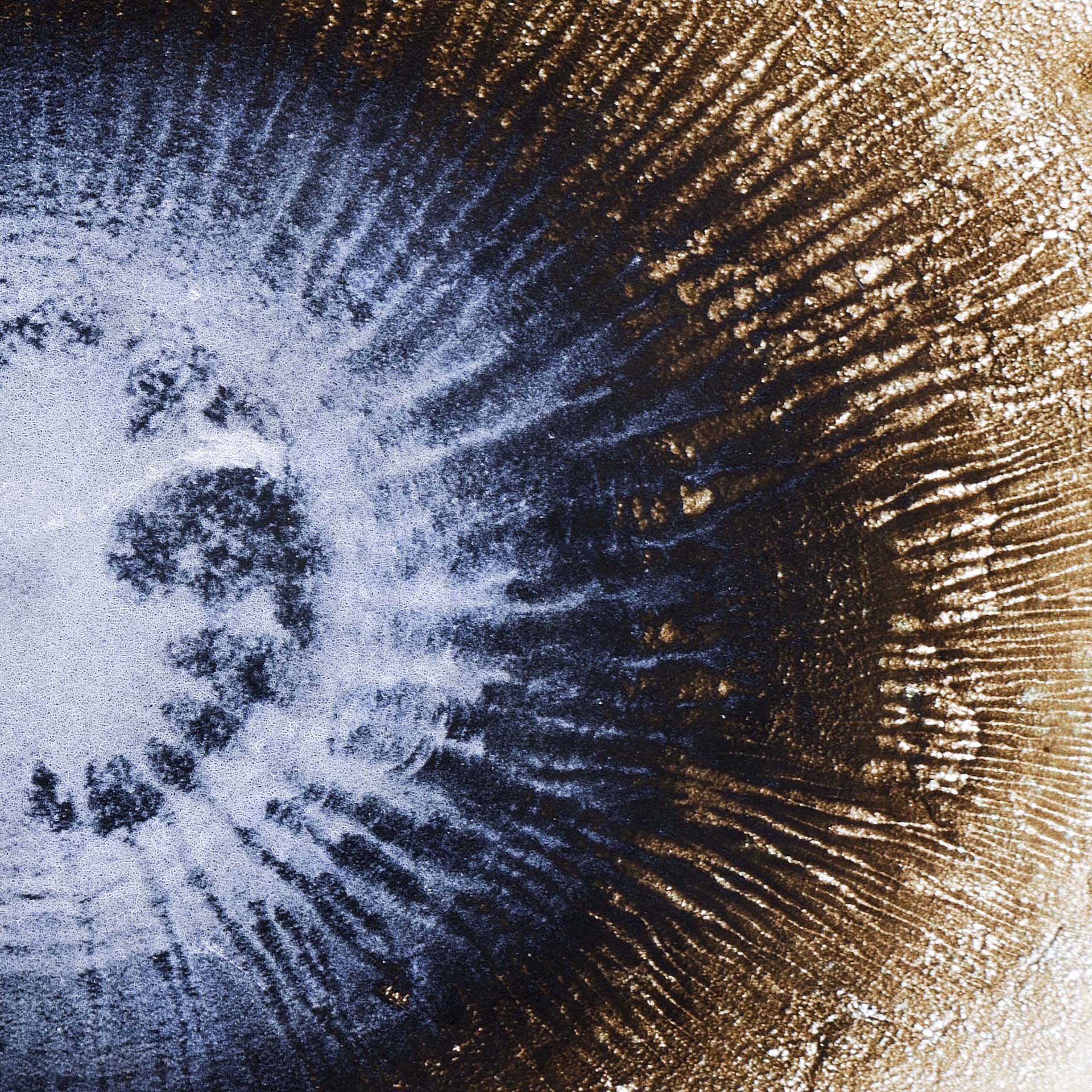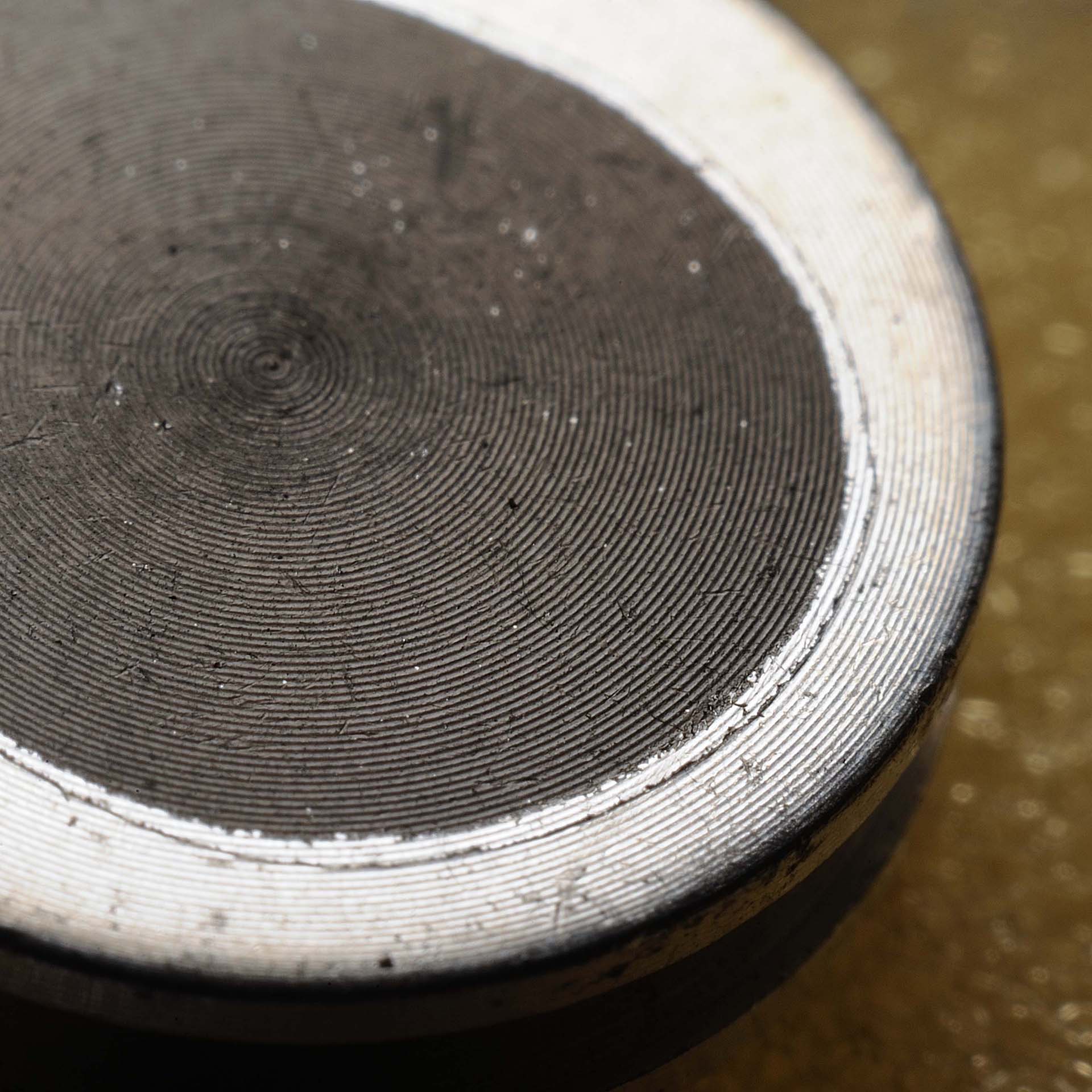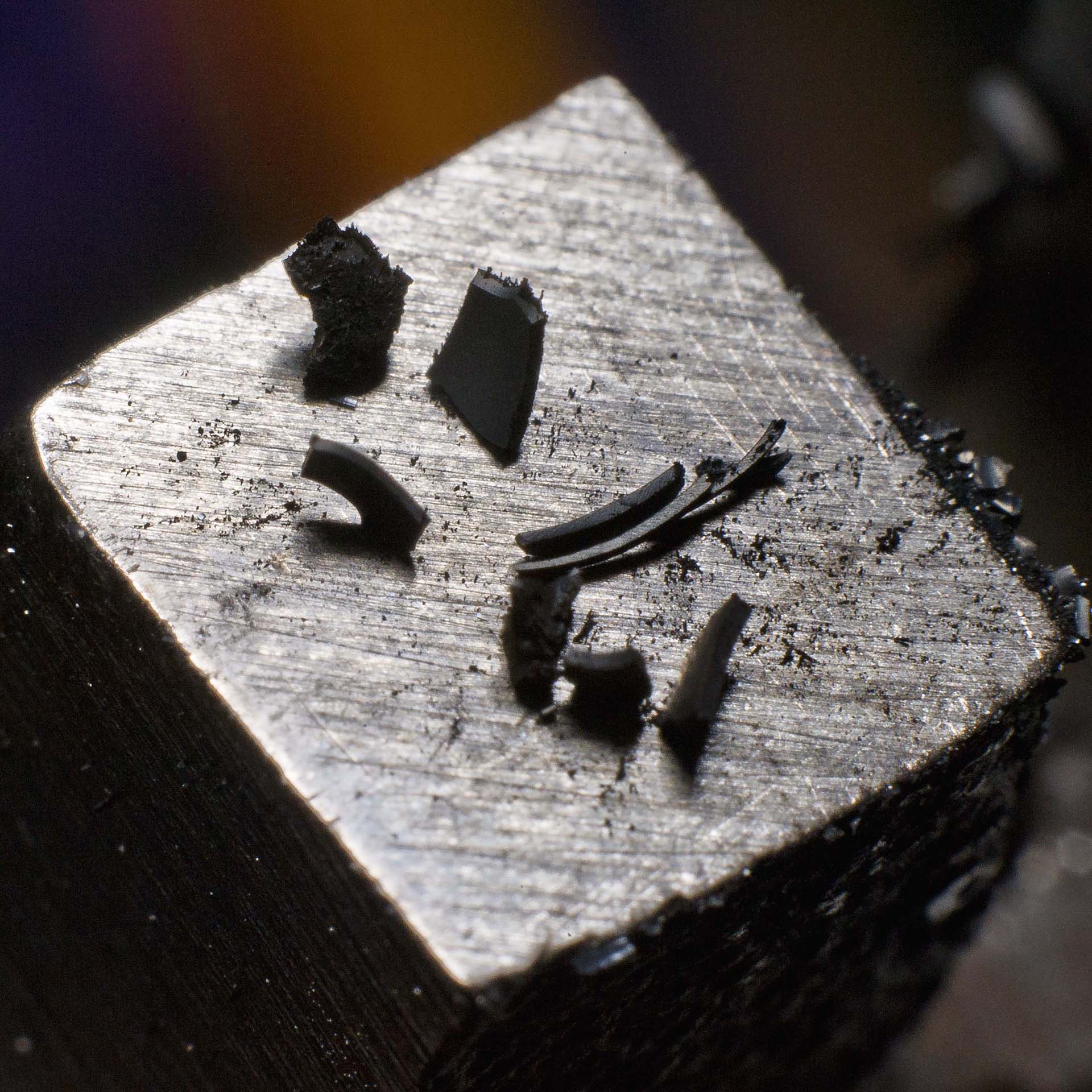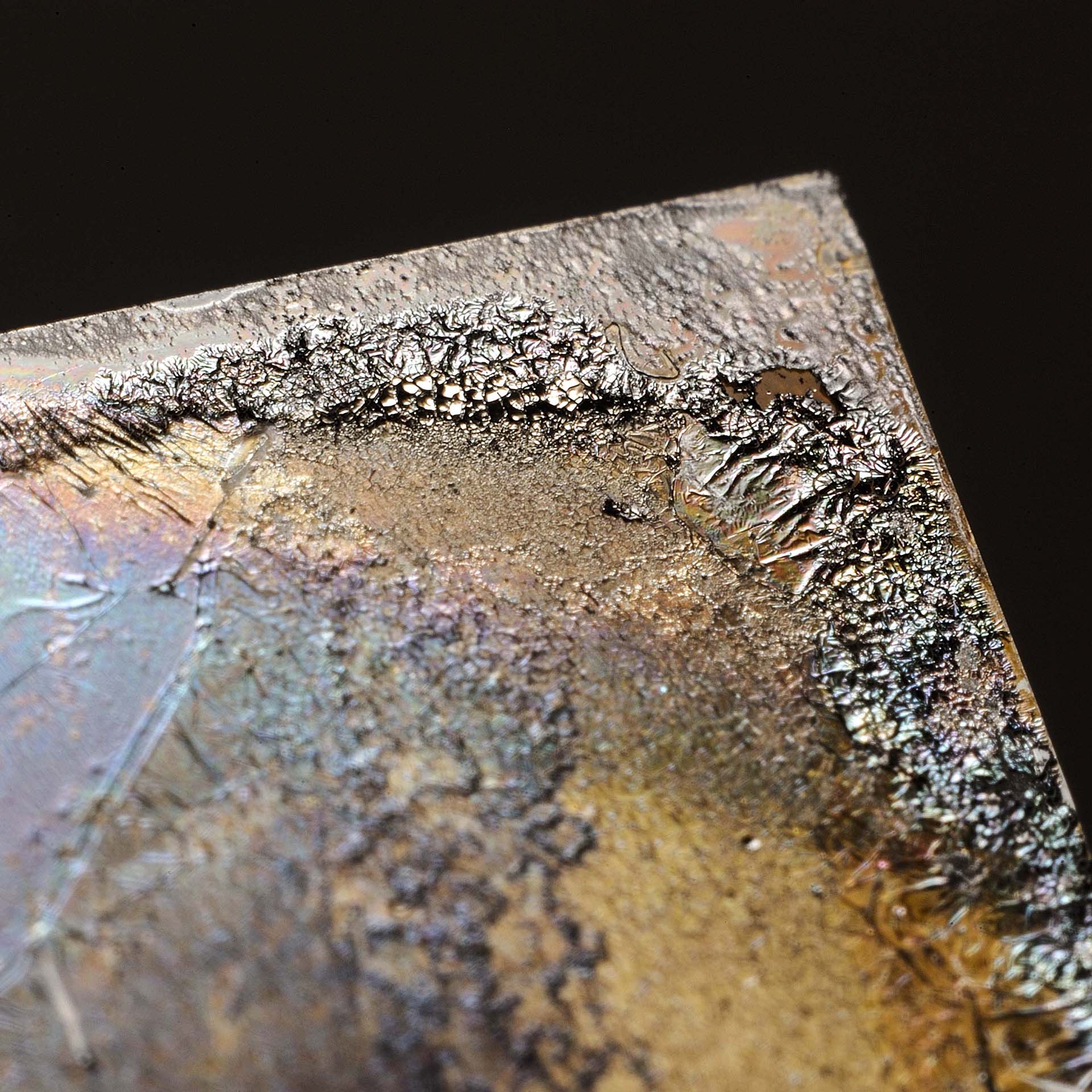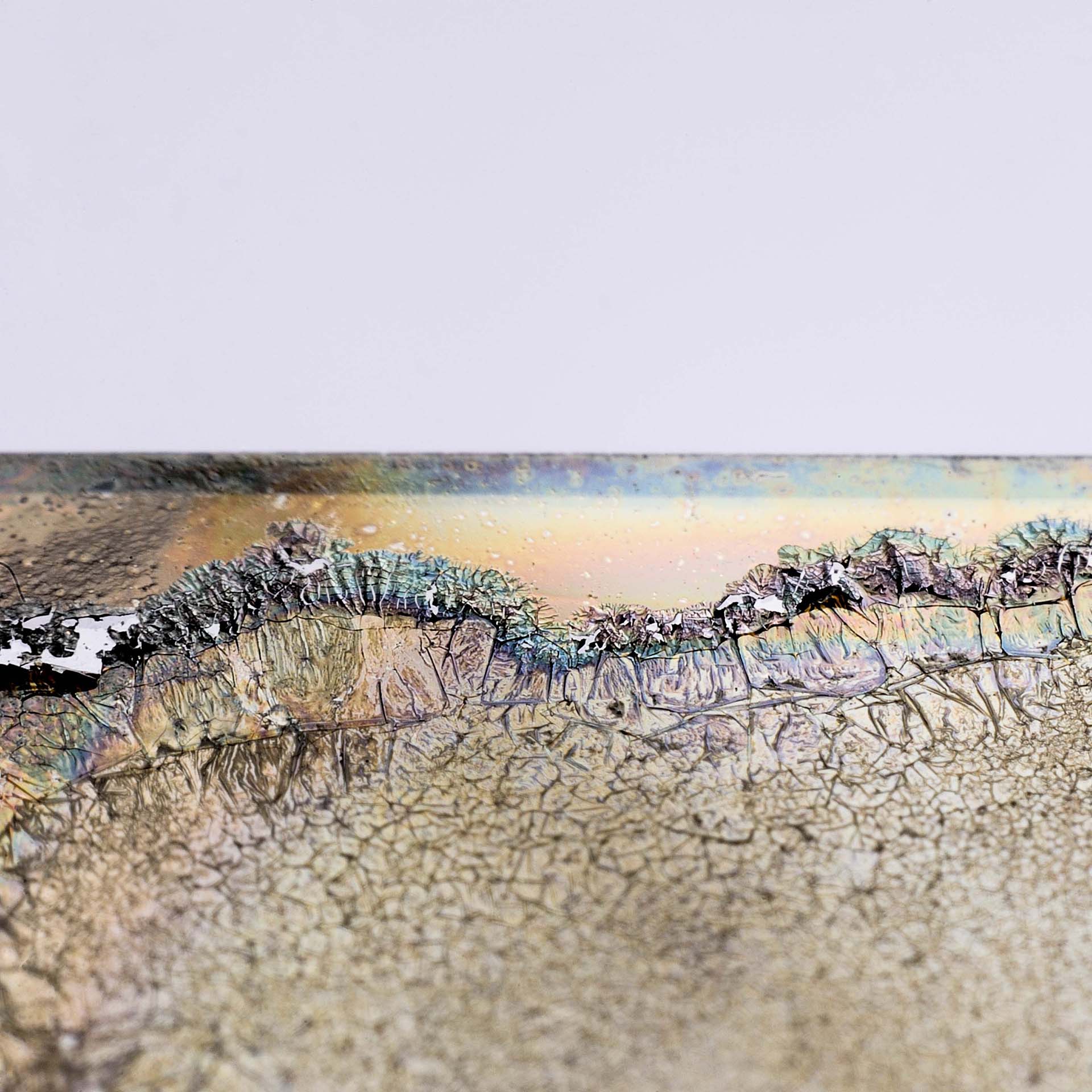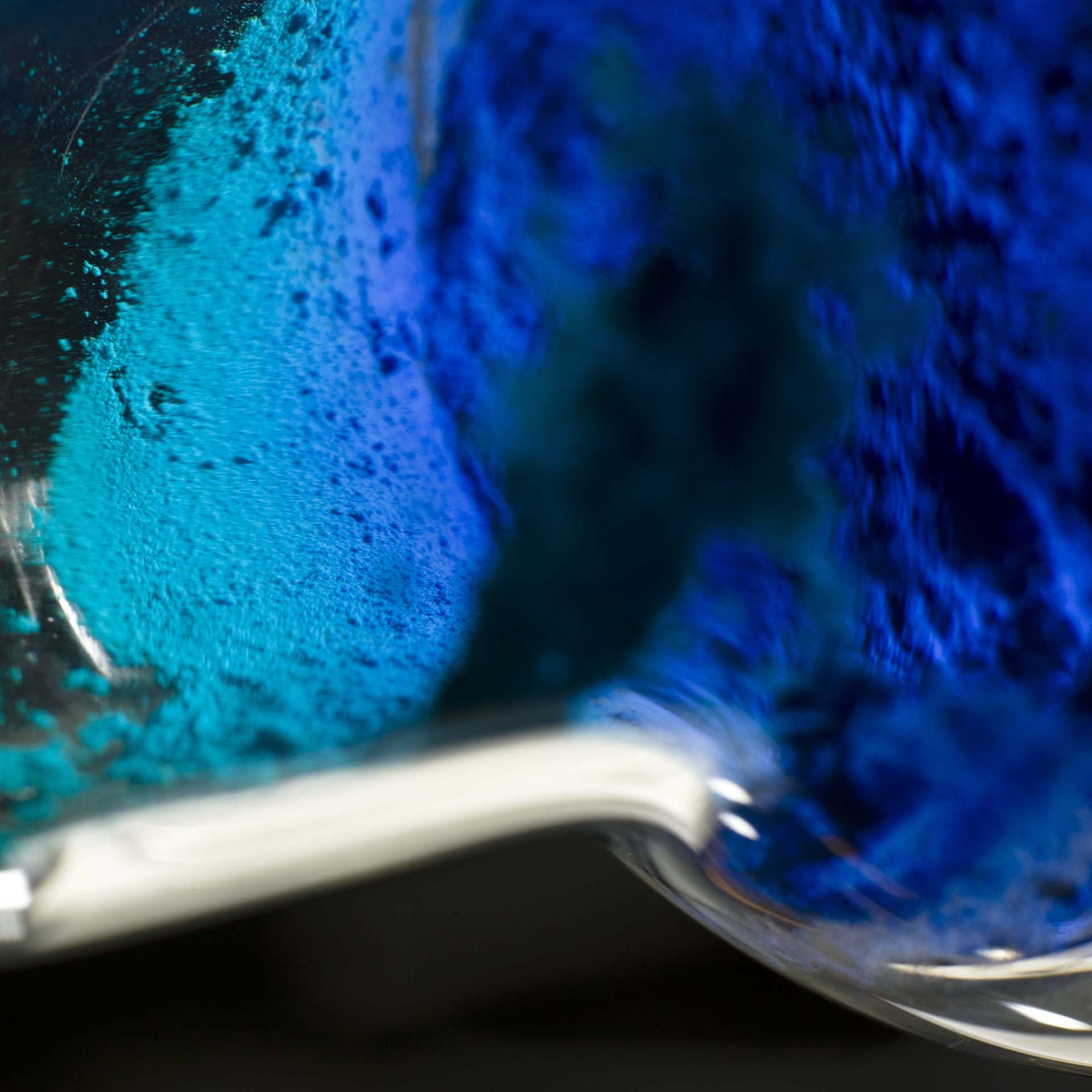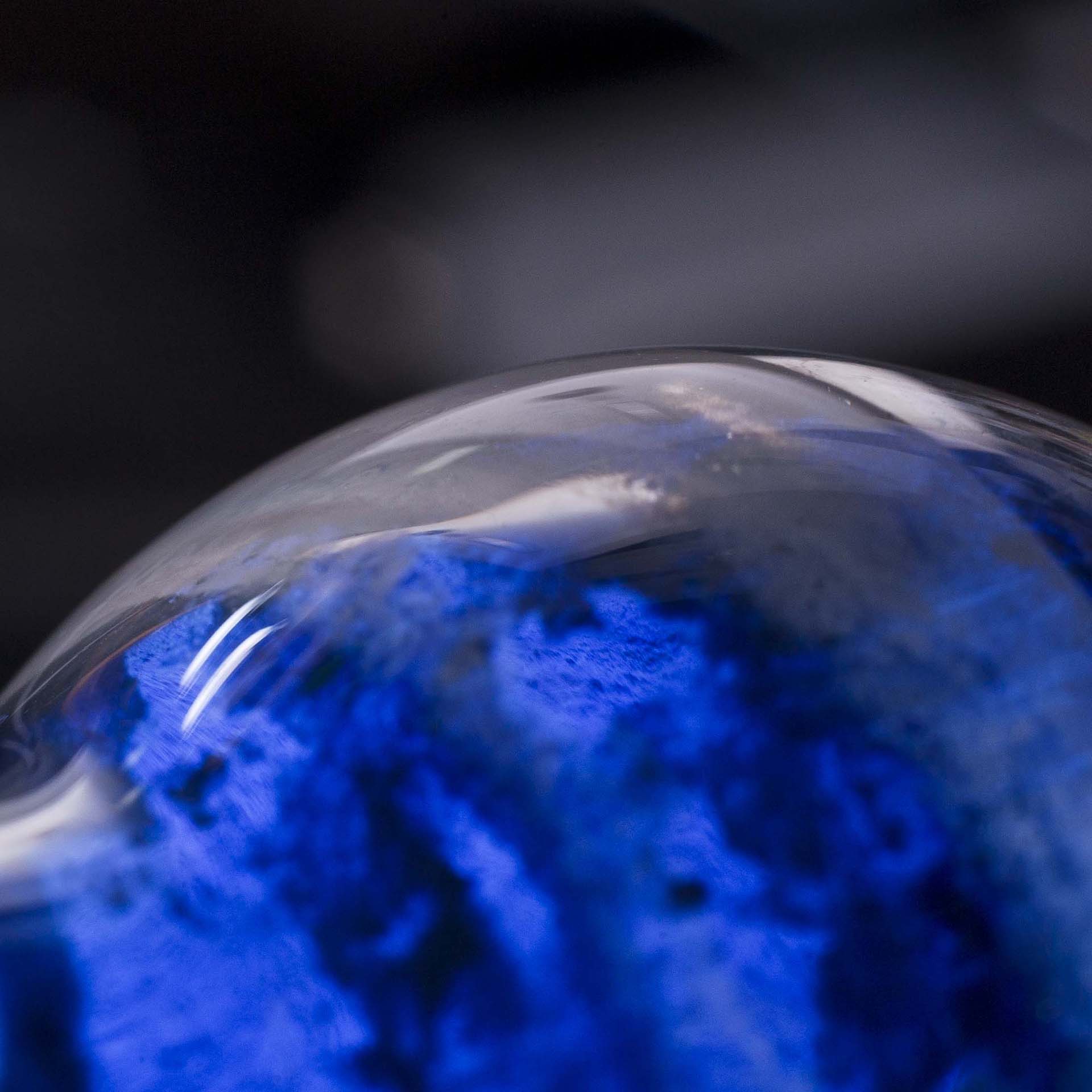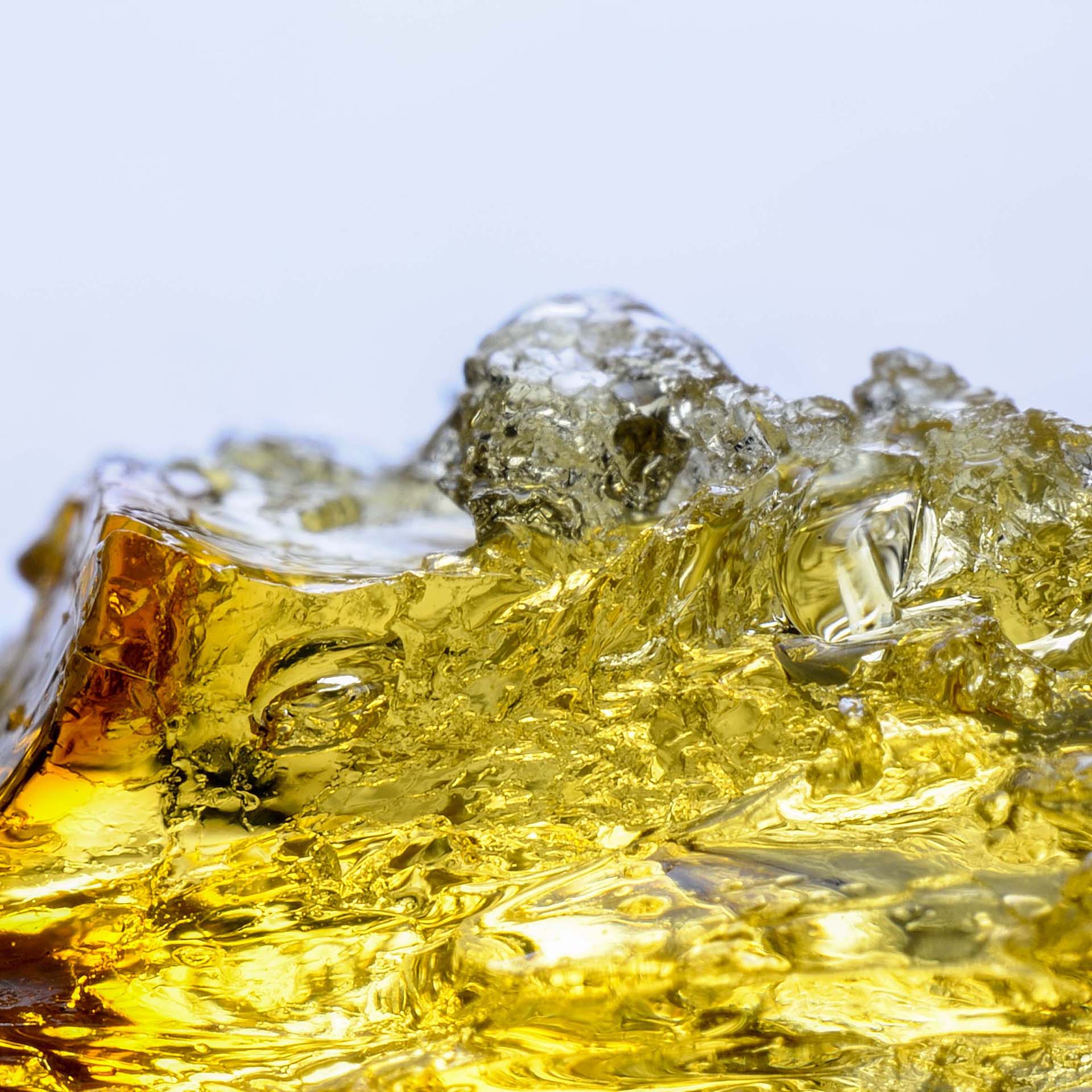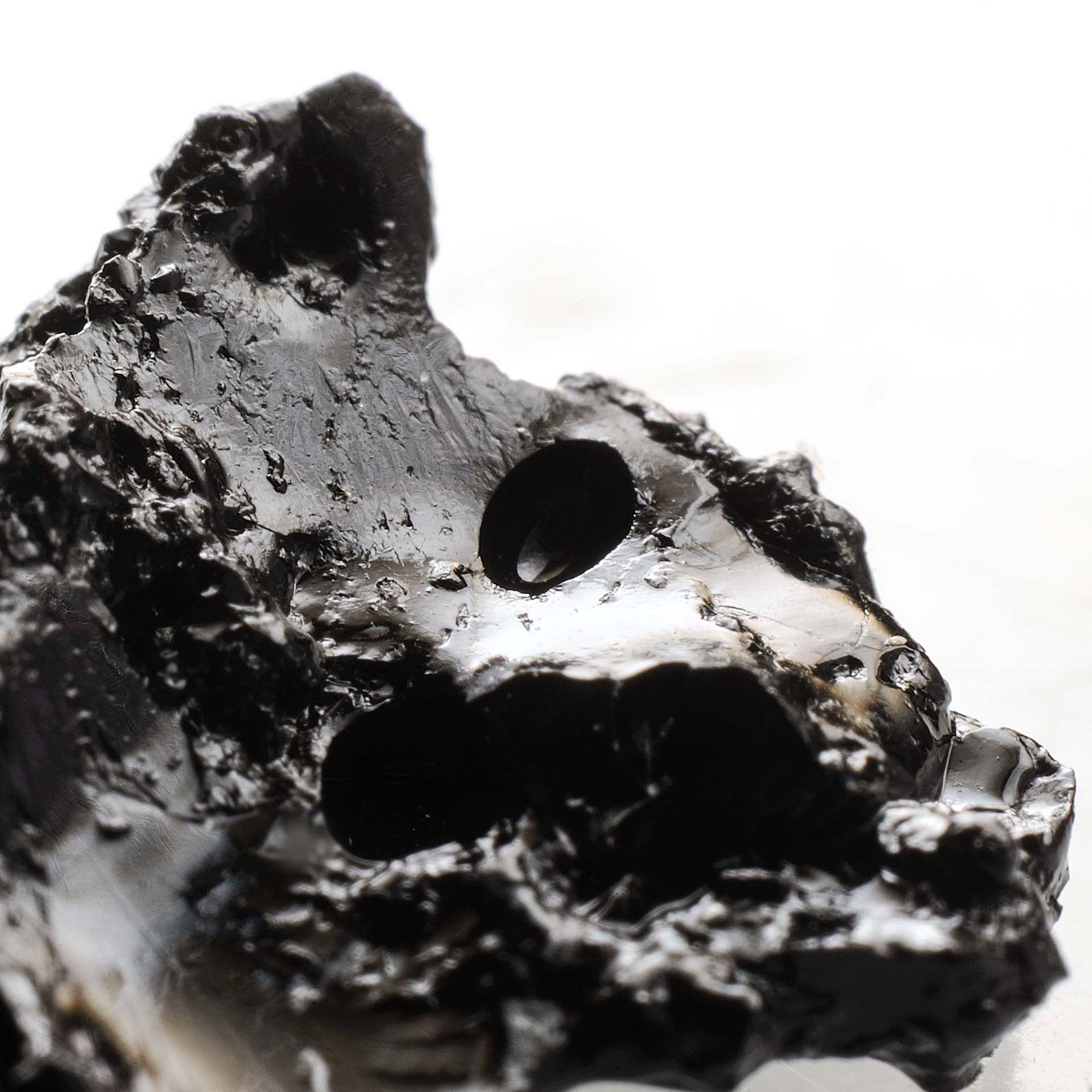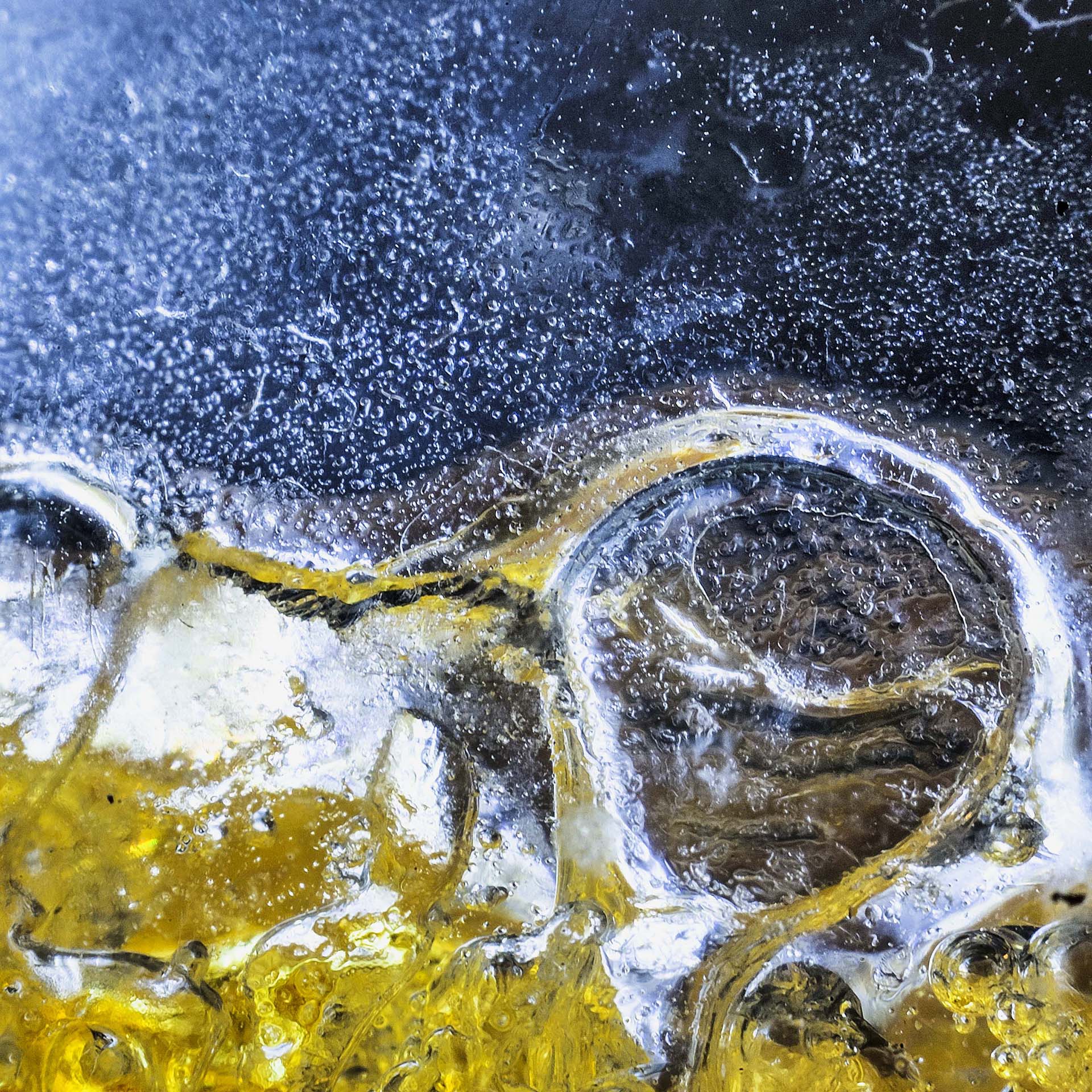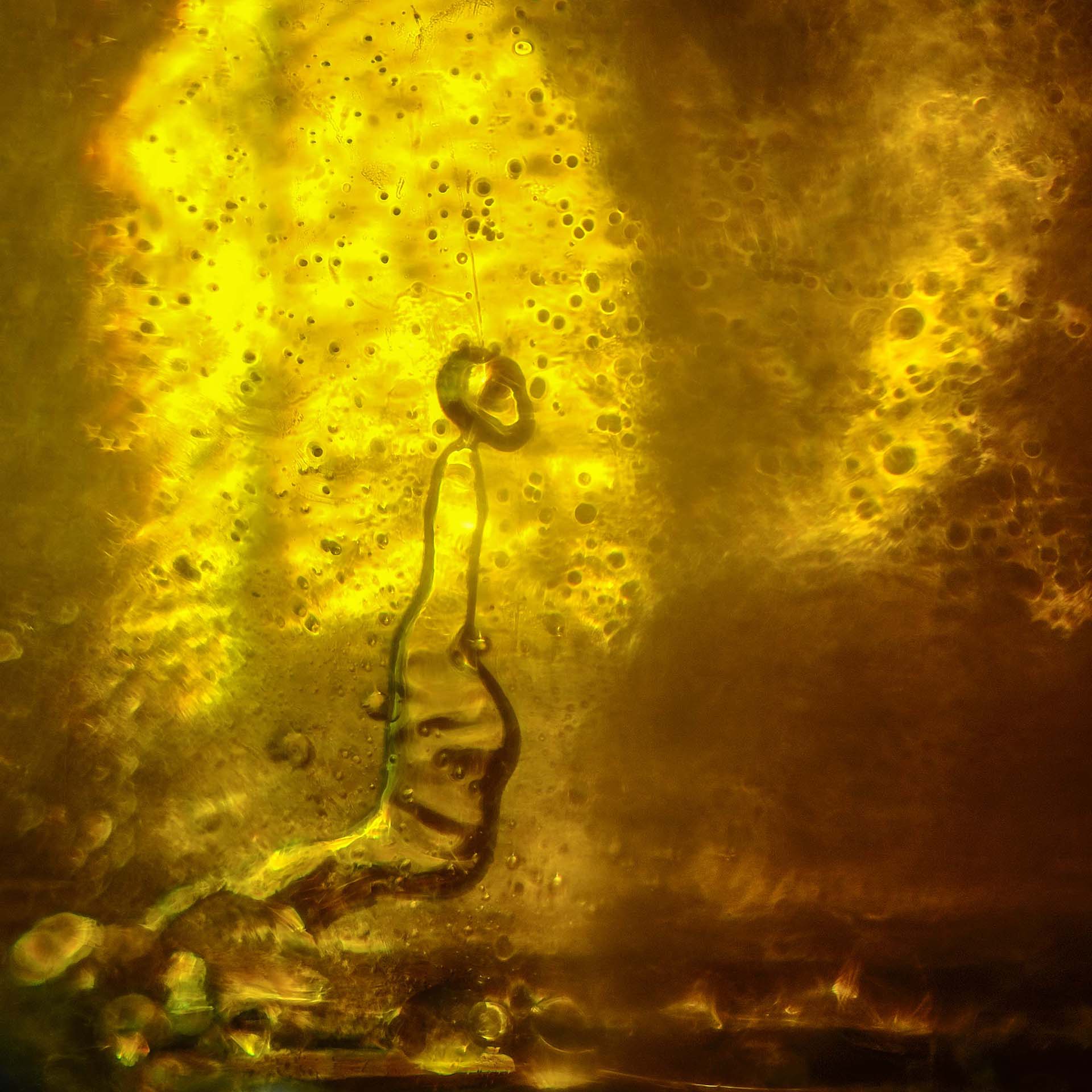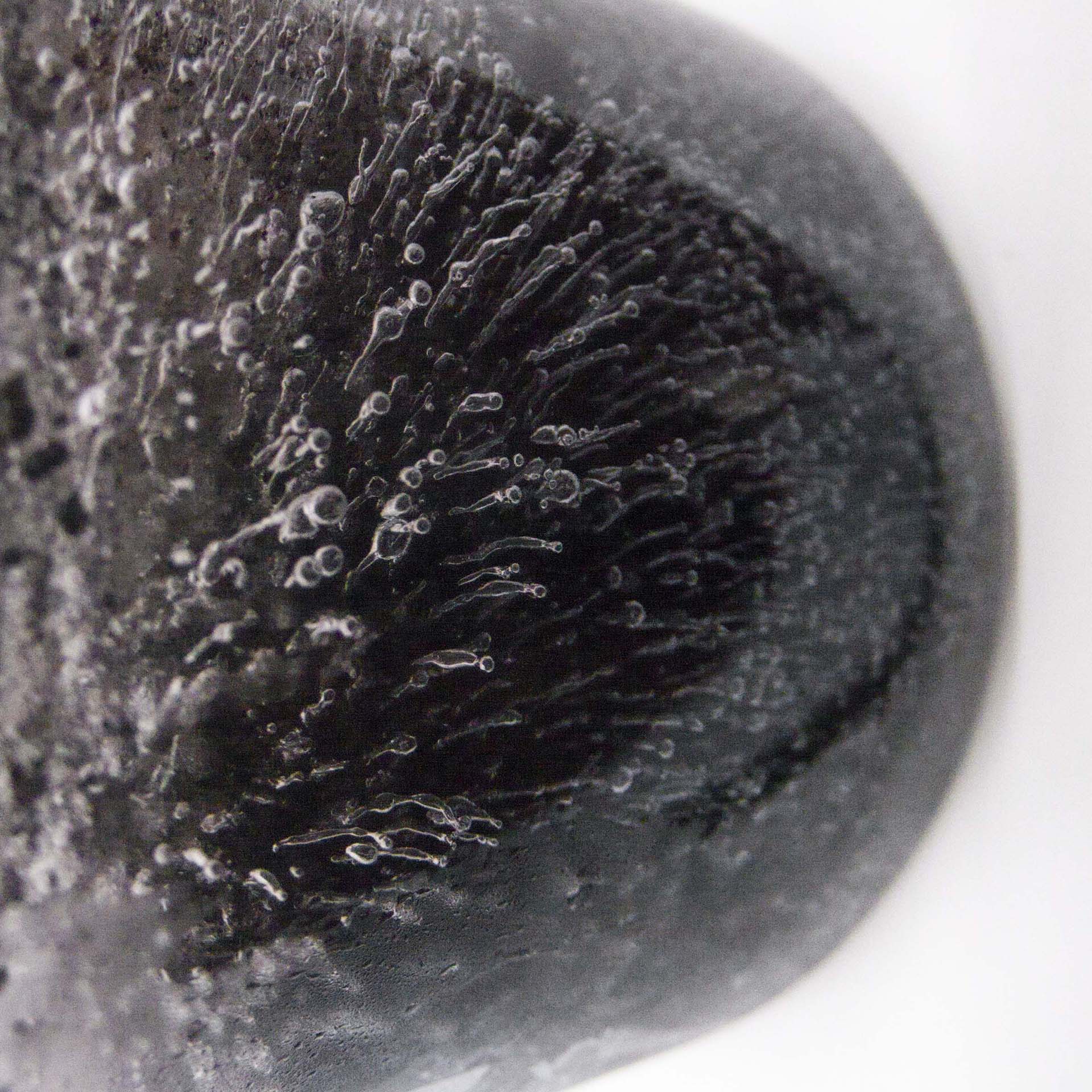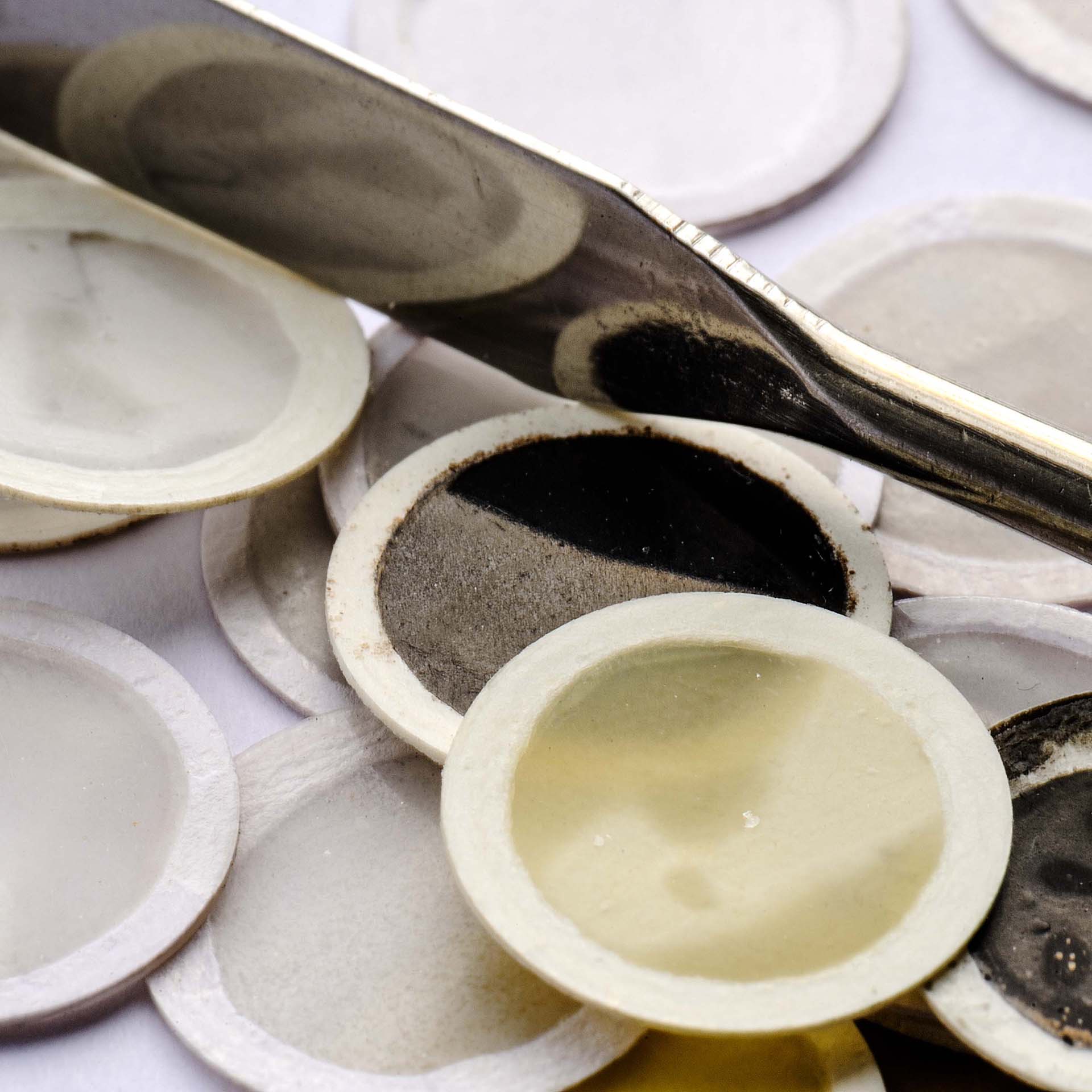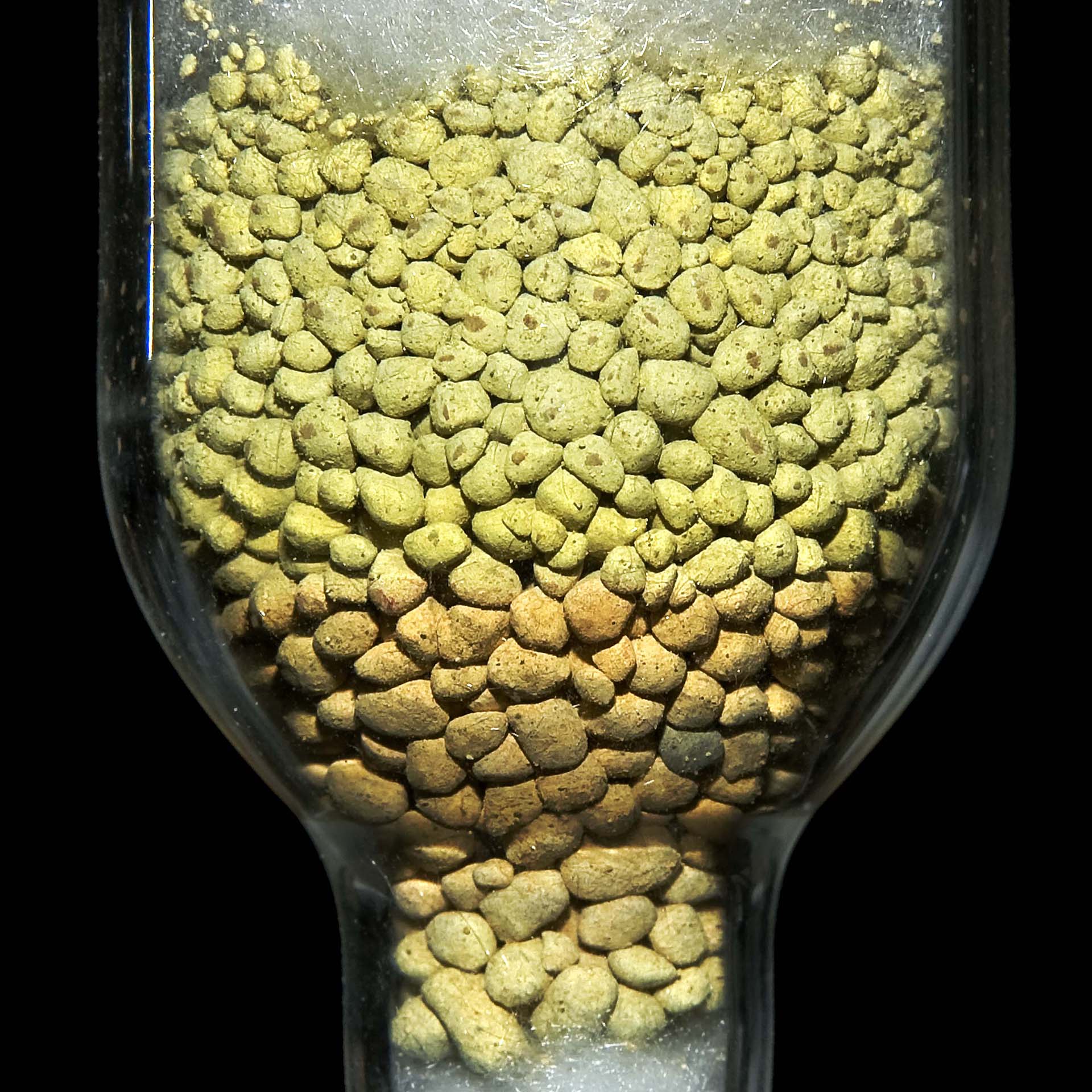Twenty photo shots of images of latest generation materials, connected with environment and energy which, although anchored to their scientific nature through rigorous captions, suggest in a highly evocative way further visions beyond those represented, playing with the imagination to also grasp the aesthetic side in frontier research.
The photographic exhibition is promoted by the Embassy of Italy in Mexico in collaboration with Città della Scienza in Italy and Universum in Mexico. It will be set up at the Cultural Institute of Mexico as soon as the pandemic emergency allows it.
The authors of the photos are the CNR researchers Mauro Caccavale, and Michela Alfé.
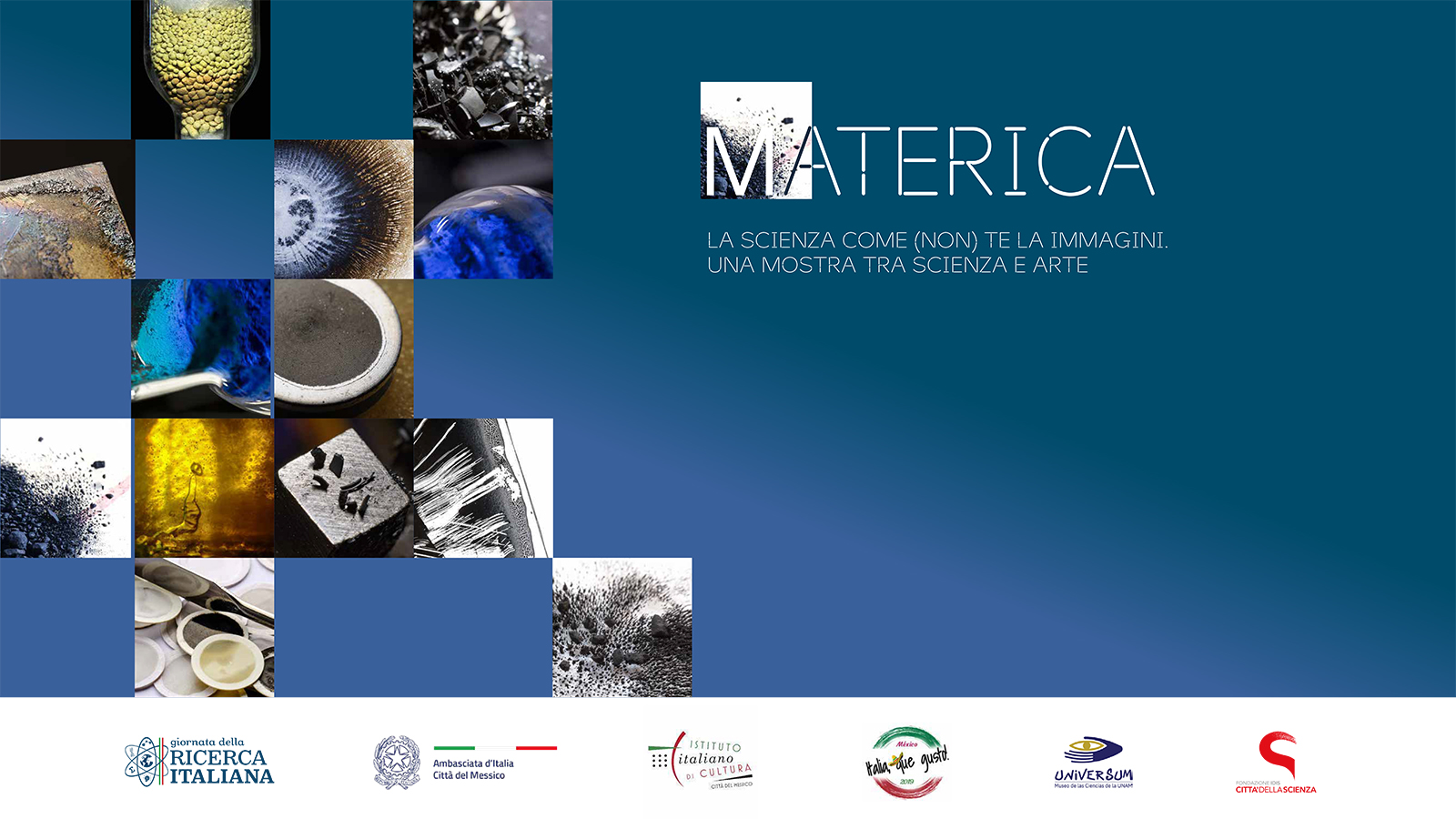
- FLAME
- CARBON BLACK
- MAGNETIC CARBON BLACK
- GRAPHENE-LIKE MATERIALS
- GRAPHENE-LIKE MATERIAL FILM
- GRAPHENE FOR NON PLANAR SURFACES
- MAGNETIC GRAPHENE-LIKE MATERIALS
- MELANINE - EUMELANINS
- I METAL ORGANIC FRAMEWORK (MOF)
- MOF GRAPHENE-LIKE HYBRID
- POLYVINYLPYRROLIDONE GEL
- POLYVINYLPYRROLIDONE-GL LAYERS
- BUBBLES
- GRAPHENE DIALYSIS
- INFRARED SPECTROSCOPY
- ELEMENTS ANALYSIS
A flame burning in controlled condition can be considered as a chemical reactor system is meant for the gas phase synthesis of nano materials. The basic principle is to produce a flame by burning a suitable fuel with an oxidizer: by acting on the flame parameters (fuel/oxidizer ratio, typology of fuels…) and/or introducing a precursor in the oxidizing flame, is it possible to obtain carbonaceous materials and/or nanocrystalline oxides with specific chemico-physical features.
Carbon black is largely constituted of hydrophobic material organized, at nanoscale level, in graphene layers with various degree of deviation from planarity and a different amount of less organized areas (i.e., amorphous and disordered carbons) that makes carbon black particles more reactive than graphite. Carbon black is a versatile carbonaceous material prone to be structurally and chemically modified in quite mild conditions.
Carbon Capture and Storage (CCS) embodies a group of technologies consisting in the separation of CO2, one of the main responsible for the greenhouse effect, from large industrial and energy related sources, transport to a storage location and long-term isolation from the atmosphere. CCS through CO2 adsorption with solid sorbents is one of the most promising options for post – combustion CO2 capture strategies. Magnetic iron oxide (magnetite) particles are good low-cost CO2 sorbents. Carbon black coated with magnetite allows reducing agglomeration of magnetite particles, thus enhancing the CO2 capture performances and application in technologically advanced systems.
The picture shows blocks of graphene-like material obtained from carbon black using an alternative procedure compared to the classic one which involves the use of graphite as a starting material. This low-cost approach is highly compatible to an industrial scale-up process with a particular attention to the environmental impact since all procedures are performed in aqueous environments.
The graphene-like layers obtained from carbon black undergo to self-assembling in thin film on surfaces after drying, thanks to the instauration of hydrophobic interactions between the graphenic layers, as typically observed in reduced graphite oxide. With this material conductive flat thin film (20 nm) been produced, with potential applications in optoelectronics and sensoristic.
The films obtained from graphene-like material produced from carbon black may be modulated in order to control the thickness and therefore the film transparency. In this way the films can be used in various electrical, optical, and biological applications. Given the small size of the graphene-like material, they are suitable to non- planar substrates facing since they easily conform to the surface roughness. The pictures show films adapting to the concentric roughness of a glass and of an aluminum surface which has regular grooves.
Thanks to their good stability in water, driven by residuals oxygen functional groups, graphene-like layers obtained from carbon black appear as a very versatile nanomaterial, suitable for the preparation in aqueous environment of composites with tunable chemical/physical properties such as microporosity, conductivity, catalytic performances and biocompatibility. The picture shows graphene/iron oxide magnetic hybrids obtained combining graphene-like layers and iron salts.
Organic (bio)electronics appears to be the first target for competitive exploitation in the materials science of eumelanins, black insoluble photoprotective human biopolymers. Nonetheless, the low conductivity of these pigments is limiting the implementation of eumelanin-based devices. A novel organic/organic hybrid material has been produced by integration of conductive graphene-like layers within the eumelanin pigment. The new material featured promising biocompatibility (stem and neuronal cells) and an increased conductivity with respect to eumelanin by four orders of magnitude.
The metal organic frameworks (MOFs) are new generation crystalline materials. The MOFs typical feature is the high surface area (comparable or greater than zeolites, microporous crystalline volcanic minerals) and a porosity highly tunable, which makes them excellent adsorbers of gas and water. One of the most striking characteristics of some MOFs is the gradual color change as a result of absorption of water of the atmosphere. The picture captures the change of color, from blue to cerulean blue, of a copper-based MOF, after exposure to the air.
A copper-based metal organic frameworks (MOF) was combined with graphene to obtain a hybrid material which, unlike the pure MOF, is conductive. The hybrid can be obtained with a variable amount of graphene in order to modulate the porosity and electrical characteristics. These new hybrid materials open up significant prospects in the field of sensoristic and CO2 capture strategies. The presence of copper gives a distinctive blue color to the hybrid.
Polyvinylpyrrolidone (PVP) is a water-soluble polymer made from the monomer N-vinylpyrrolidone. In specific controlled conditions PVP forms a stable gold-yellow gel containing up to 80% of its weight in water. PVP gel is soft and biocompatible, finding application as component of transdermal drug delivery systems. PVP acts as antinucleating agents that retard the crystallization of a drug improving the solubility of a drug in the matrix.
The polymer polivinilpirrolidone (PVP) is soluble in water and other polar solvents and is highly compatible with water-stable graphene-like (GL) layers obtained from carbon black. Under specific controlled conditions PVP and GL forms black stable soft gel containing up to 80% of its weight in water. Thanks to the biocompatibility and to the partial hydrophobic character of the GL layers, the PVP/GL gel finds application as component of transdermal drug delivery systems for non-polar drugs.
A molecule within the bulk of a liquid experiences attractions to neighboring molecules in all directions, but since these average out to zero, there is no net force on the molecule because it is, on the average, as energetically comfortable in one location within the liquid as in another. A molecule that finds itself at the liquid surface is attracted to its neighbors below and to either side, but there is no attraction operating above the surface. As a consequence, a molecule at the surface will tend to be drawn into the bulk of the liquid. Conversely, work must be done in order to move a molecule within a liquid to its surface. Clearly there must always be some molecules at the surface, but the smaller the surface area, the lower the potential energy. Thus intermolecular attractive forces act to minimize the surface area of a liquid. The geometric shape that has the smallest ratio of surface area to volume is the sphere, so very small quantities of liquids tend to form spherical drops. As the drops get bigger, their weight deforms them into amazing shapes. Think of a bubble as a hollow drop…
Dialysis is a common laboratory technique that allows separating, by means of a semipermeable membrane, large molecules or particles from small impurities. Sometimes, however, you may manifest fascinating phenomena when the membrane, immersed in water, is kept at low temperatures to avoid the growth of mold. The picture shows a curious phenomenon of formation of air channels after the unexpected freezing of a dialysis membrane containing a suspension of graphene to be purified.
Infrared spectroscopy deals with the infrared region of the electromagnetic spectrum, that is light with a longer wavelength and lower frequency than visible light. As with all spectroscopic techniques, it is a fundamental tool to study solid surfaces. Solid samples can be prepared in a variety of ways. One common method is to grind a quantity of the sample with a specially purified salt (usually potassium bromide) finely. This powder mixture is then pressed in a mechanical press to form a translucent pellet through which the beam of the spectrometer can pass.
Elemental analysis is a process where a sample is analyzed for its elemental composition. Elemental analysis falls within the ambit of analytical chemistry, the set of instruments involved in deciphering the chemical nature of our world.
The most common form of elemental analysis, CHN (Carbon, hydrogen and nitrogen) analysis, is accomplished by combustion analysis in suitable packed columns. In this technique, a sample is burned in an excess of oxygen and various traps collect the combustion products (carbon dioxide, water, and nitric oxide). The masses of these combustion products are used to calculate the composition of the unknown sample.








